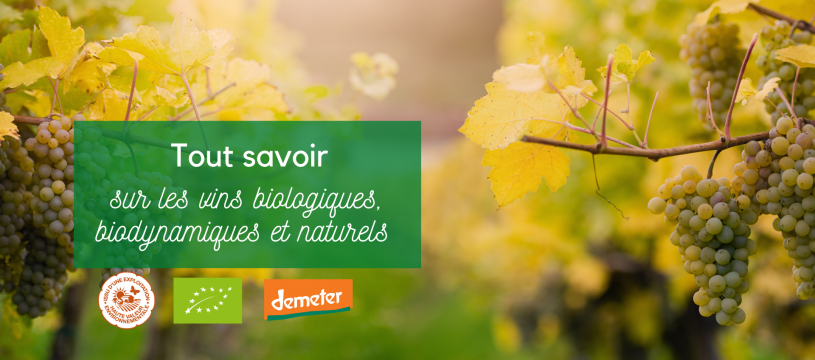
All about organic, biodynamic and natural wines
Did you know?
In 2019, the organic vineyard represents 14% of the national vineyard, 112 507 hectares and 8039 farms.
-
Organic wine
The first organic wines only date back to 1972!
It is important to remember that it is not the wine that is organic but the viticulture on which it depends. It is the cultivation that is organic and not the vinification.
European regulations govern all the practices required to obtain the famous BIO label. For example, the winegrower is not allowed to use chemical fertilisers, herbicides, pesticides or insecticides.
-
Biodynamic wine
Biodynamics considers the vineyard as an element directly linked to the elements (earth, moon, air, planets...).
The agricultural estate is then seen as a self-sufficient ecological entity where the winegrowers modify their viticultural practices by respecting the position of the elements.
Preparations and remedies, called "préparâts", are used to treat, fertilise or repel pests.
Demeter and Biodyvin are the best known biodynamic certifications. The specifications are very precise, with a special calendar for the treatments and care of the vines according to the moon, the sun and the planets.
-
Natural wine
It is defined as a "living wine". It is the result of organic or biodynamic farming, with the difference that it is vinified without added sulphites.







